Gray
Site sediments and invertebrates
All
magnifications refer to a 13 inch (32 cm) wide screen set
to 800 x 600 pixels.

Laminated silt, weakly iron stained,
approximately natural size.
Freshly exposed material is brownish gray, of low chroma.

Closeup, times four. Graded bedding,
and a minor disconformity become conspicuous. The
small offset visible on left is real, and about an
inch long. Such features are quite abundant.

A few of the beds are cemented,
remaining intact and brittle when wet. This fine
grained sandstone grades in color from 10 YR 5/2
on the upper surface to 10 R 4/2 in the center.
Cementing materials not yet determined, probably
siderite (see Thin Sections). Four times
magnification.
Black layered clay, scanned
while
damp, immediately after being broken.
"Weathering rind" resulted from
reacting with the small quantity
of air while sealed in a plastic bag
for some time.
|
|
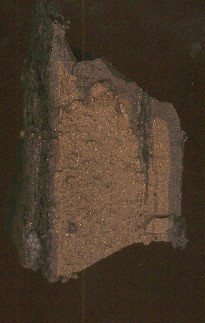 |

Exposure of dark laminated clay with in situ
gravel. White circle on left is 5 cent nickel.

Another of the many chert gravel layers, pocket
knife for scale. Photo Dr. Robert Hatcher.
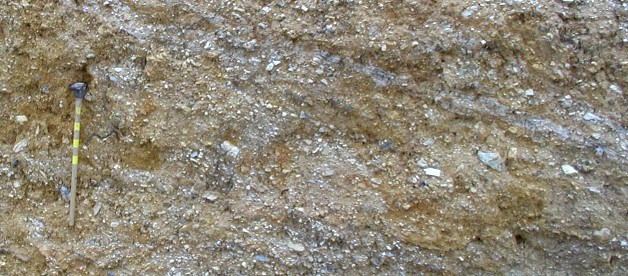
Exposure of weakly layered angular
chert gravel, dipping beds, in north corner of
the excavation. Most of this material is now
destroyed. Photo Dr. Robert Hatcher.
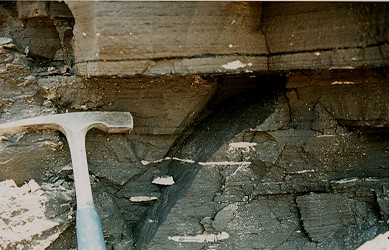
Exposure of dark clay with streaks of
sandy-textured partially decomposed dolomite.
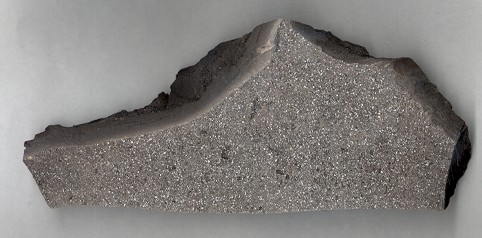
Ostracod-bearing bedding surface
in black layered clay, about 3/4 times natural
size.

Eight-times magnification of poorly-preserved
ostracods.
 |
|
Snail shells
also did not fare
well. Shown is a typical specimen,
natural size, and eight-times
magnification, below. Freshwater
Planorbidae, Planorbella. |
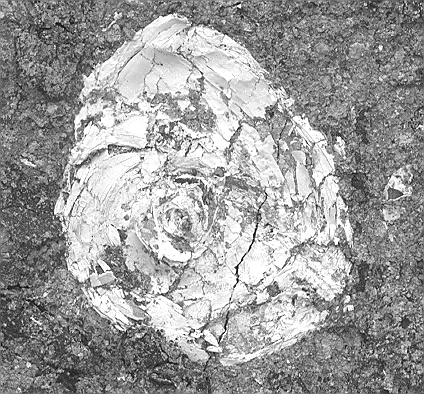
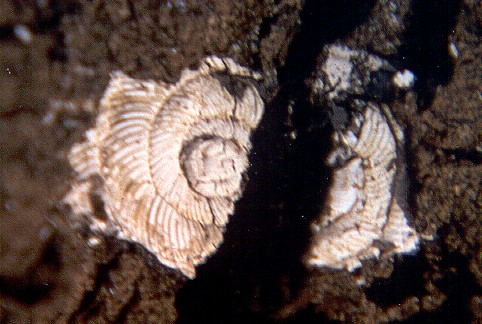 |
|

This land snail shell is
offset
by a small normal fault in the
dark sediment matrix. Family
Discidae, genus Anguispira.
Photo and specimen, Harry
Moore, TDOT. |
Home
Page | Links | Bone Gallery | Plant
material |
Geologic features | Drillholes
and stratigraphy
| Geologic map | Thin
Sections |
Scenes
and activities
|